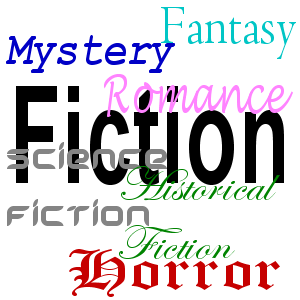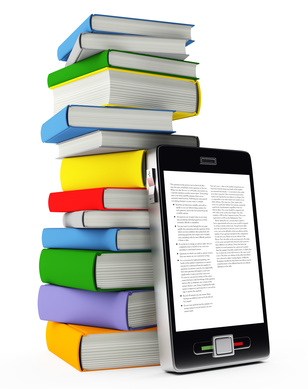Stories To Tell Books BLOG
Filtering by Category: About Publishing
Senator Charles Schumer Says, Drop E-Book Lawsuit
Nan Barnes
New Ways to Tell Stories With Tech Tools
Biff Barnes
Hardcover Books: Why, When, How?
Nan Barnes
Can I Use That Copyrighted Material in My Book?
Biff Barnes
The Amazon Effect and First Time Authors
Biff Barnes
You Don't Think Book Design is Funny? Watch This
Nan Barnes
If you haven’t yet explored the TED talks (TED is a nonprofit devoted to Ideas Worth Spreading) check them out at http://www.ted.com/talks. You’ll be sure to find something that speaks to your particular interests.
For me, that particular interest is in books – reading them, making them, sharing them. So this talk from Chip Kidd, king among book designers, pleased me to no end. Chip Kidd brought us the distinctive book cover of Jurassic Park, and one of the best-designed, all-around-best books on my reading shelf right now, Haruki Murakami’s IQ84.
Chip Kidd is clever, he’s funny, and he is right on about books! Check out his performance for a laugh, and maybe it will also inspire an idea for how you’d like your book to look.
What Are Your Book’s Comparables?
Biff Barnes
What Should an E-Book Cost? Who Should Decide?
Biff Barnes
Who Owns the Rights to Your Book?
Biff Barnes
Questions for a Self Publishing Author
Biff Barnes
Publishing with a University Press
Biff Barnes
A Genre by Any Other Name … Confuses People
Nan Barnes
It’s easy when your book is a mystery, or a children’s book, or another easily identified genre. People know if they like those type of books. But some writers have an idea they want to write about, and like a square peg in a round hole, they don’t have a nice genre slot to fit it into.
 In business, we are all taught to give an “elevator speech”, to describe in just 30 seconds, if need be on a short trip to the upper floor, what exactly it is we do. Why? So people will know if they are interested in us and our business. The same goes for books. They need to be easily slotted into a genre category, for the ease of the casual browser, who will likely make a snap judgment.
In business, we are all taught to give an “elevator speech”, to describe in just 30 seconds, if need be on a short trip to the upper floor, what exactly it is we do. Why? So people will know if they are interested in us and our business. The same goes for books. They need to be easily slotted into a genre category, for the ease of the casual browser, who will likely make a snap judgment.
Just take a look at your supermarket’s bookshelf. The genre is announced loudly by the book’s cover design, and reinforced by the tile and promotional copy. These westerns and romances and thrillers are easy to recognize and are guaranteed to sell.
Other genres are more troublesome. I’ve been reading In Other Worlds: SF and the Human Imagination, a new book out by Margaret Atwood. (If you haven’t read her, I cannot praise loudly enough Atwood’s fascinating novels, essays, and poetry.) Margaret Atwood has been hard to slot in the book-buying world. She terms The Handmaid’s Tale and some of her other novels “speculative fiction”, which has aroused the ire of science fiction fans who would like to claim her as one of their own. Ursula K. LeGuin criticized Atwood’s genre definition, writing in a Guardian article, “This arbitrary restrictive definition seems designed to protect her novels from being relegated to a genre still shunned by hidebound readers, reviewers and prize-awarders. She doesn’t want the literary bigots to shove her into the literary ghetto.”
Atwood tells this story to illustrate a point: calling it science fiction or speculative fiction may seem to be just semantics, until it isn’t. Atwood defines the genres this way: science fiction deals with things that might happen in the future, such as space colonies. But speculative fiction deals with things that might be happing already; it is a more direct commentary on current culture; and it’s not necessarily “scientific”. And fantasy, also often lumped in with SF, is about things that have never happened and could never happen – think unicorns.
Why niggle about this? Because of the book marketing campaigns that follow once a book is slotted into its genre. Or pounded in, like a square peg into a round hole. Atwood describes her horror when her publisher released her books with lurid, sexy covers. Imagine how disappointed those misled buyers would be to read her un-sexy words! She imagines poeple angrily throwing her words into the trash, unread. Ouch.
The publishing industry used to dictate a lot of these genre terms, as they had a pipeline to the bookseller’s shelves, arranged by genre. It was out of the author’s control. Now, in this brave new world of self publishing and online social marketing, we must think about genre, and decide how to present ourselves. Carefully.
Many of our blog readers, and our author clients, fall under the big genre umbrella of biography. This encompasses autobiography, memoir, and family history, and many fascinating topics are also nestled under there too, such as a memoir about a career as a spy or the biography of an avid butterfly collector.
So how do we communicate what exactly our books are? First, unless you’re as good as Atwood, stay under the umbrella and associate yourself with what is already known. Not sure? Find comparable books and see how they have described themselves. Or ask an editor. Next, communicate your identity clearly. Link the genre with the specific subject, such as Suspense Thriller, Cold War or Self Help, Diabetes. Develop a good elevator speech, and try it out on those who have read your draft. Be accurate.
Next, design the book to look like what it really is. Sepia photos on the cover are fine for a memoir, but they are the kiss of death for contemporary chick-lit. (Chick-lit’s neon colors and cartoon illustrations wouldn’t do well for most memoirs, either.)
And last, perhaps most important, find ways to tell the story of your story. Talk about what your book means, specifically, so that people care and appreciate what you’ve written. If you do this part well, you can communicate your unique idea and transcend your genre.
So Many Authors, So Many Books
Biff Barnes
Is the New York Times Right About Ebooks on Tablets?
Biff Barnes
Amazon and Distributor Go Toe-To-Toe Over E-Books
Biff Barnes
A New Tool for Authors to Manage Collaborative Writing Projects
Biff Barnes
Selling Your Self Published Book
Biff Barnes
OCR: A Tool for Family Historians
Biff Barnes
Soft Cover, Hard Cover, Ebook: A Case Study
Nan Barnes
Our client, Johnna, called me with a problem. We completed her book early last year, and she published it with much fanfare, making it available on amazon.com. Her friends and family all bought copies. But then her life got busy. She has kids and a job, and her book project lost momentum. Now Johnna is looking for more and better ways to get her book out to readers. But what book, exactly? Softcover, hardcover, or ebook?
 Softcover: Johnna’s religious self-help book, Celestial Marriage: Reflections on Marriage and Faith, is currently published in softcover. In fact, amazon.com will only sell softcover books. Softcover books are affordable, and given that Johnna’s book is filled with beautiful photographs, full color printing was a must. Amazon’s CreateSpace prints color books cheaply enough that the cover price is affordable for buyers online. Authors can buy copies even cheaper, at cost, and hand-sell them. And it cost Johnna nothing to put the book up for sale on amazon; print on demand means the buyer pays the costs of printing and shipping, not the author.
Softcover: Johnna’s religious self-help book, Celestial Marriage: Reflections on Marriage and Faith, is currently published in softcover. In fact, amazon.com will only sell softcover books. Softcover books are affordable, and given that Johnna’s book is filled with beautiful photographs, full color printing was a must. Amazon’s CreateSpace prints color books cheaply enough that the cover price is affordable for buyers online. Authors can buy copies even cheaper, at cost, and hand-sell them. And it cost Johnna nothing to put the book up for sale on amazon; print on demand means the buyer pays the costs of printing and shipping, not the author.
Pros: Sell and ship through amazon, no upfront costs, authors copies are inexpensive.
Cons: Quality is low, considering softcover’s glued binding, gives the impression of a cheap, disposable paperback.
Hardcover: Johnna would love to see her beautifully designed book in a classy hardcover. This would communicate its value as a “keeper”, and would justify a higher cover price, too. Big publishers will save on hardcovers by printing thousands, using offset presses. Smaller orders from self publishers are digital, and most digital printers have a minimum order of 25 for hardcover. This means some significant money out of Johnna’s pocket. The cheapest deal we could find for her 100 page full color book was about $32 a book. That would result in an attractive book at an unattractively high cover price, so it is unlikely she could profit.
Pros: Higher quality with longer lasting binding, better paper and cover choices.
Cons: Too expensive in small qualities to sell commercially; most suitable for high end private projects.
Ebooks: Ebooks are read by more people every year, and many authors hope to reach readers who purchase books through ereading devices. And there’s the complication: which format and device? PDFs can be read by any device, but they won’t resize as an ebook will. Kindle requires their proprietary format. Apple’s iBook for iPad accepts the universal EPUB, but requires an exclusive contract. B& N’s Nook is another sales channel, but it doesn’t get as much traffic. Should Johnna pay for two or three differently formatted ebooks? How to distribute them?
Part of the answer is Johnna’s existing website. Because she is already distributing digital media, she can sell her ebook on her website. Having paid once to format it, each successive sale is pure profit. However, her site will never receive the traffic that amazon does, and since her book is already on amazon, buyers can be sent to her page, see her softcover and Kindle version, and perhaps buy both!
Pros: Inexpensive to produce, a reformat of the original book files.
Cons: Ebook prices are significantly lower; profit per book is small. Requires many sales for success.
Our conclusions: Forget the hardcover; perhaps buy a few copies for the family. Use the internet to sell and distribute both the softcover and the ebook. Offer the ebook in the common epub format on Johnna’s website, and put the Kindle version up on amazon.